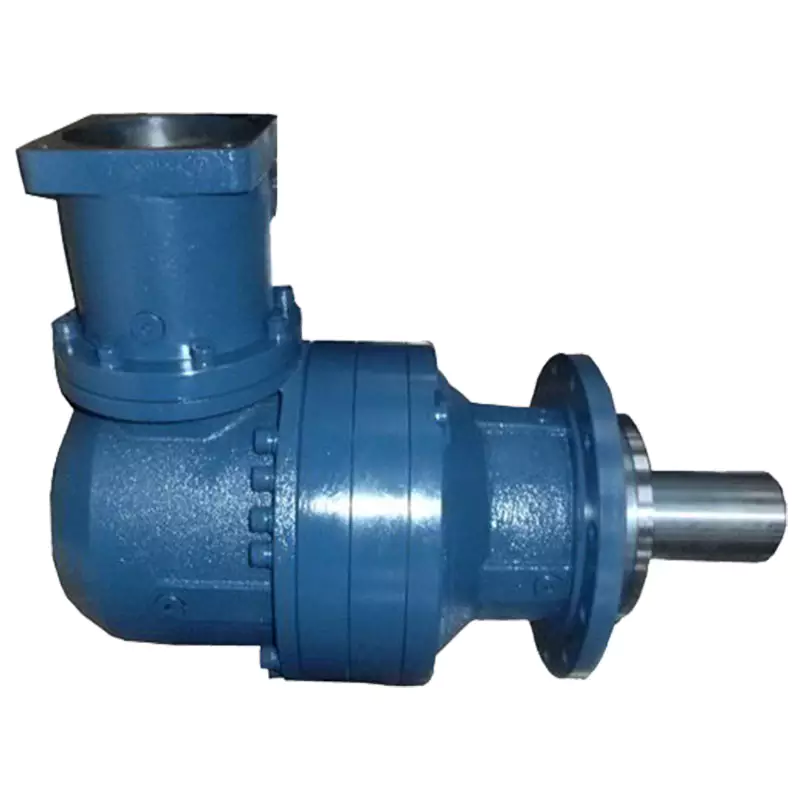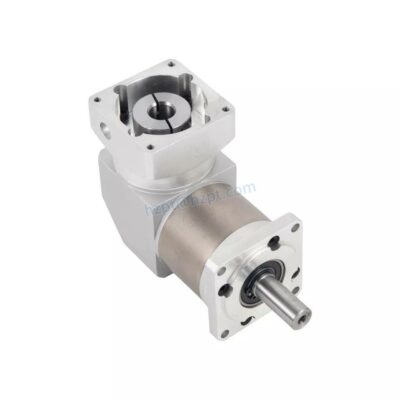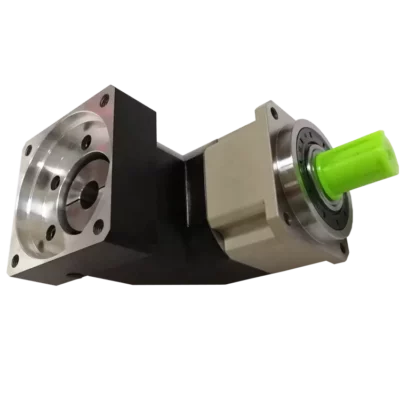Product Description
Hb Series High Torque Medium Load Heavy Duty Motor Speed Industrial Vertical Gearboxes with 90 Degree Transmission for Wind Turbine Generator
1.The HB industrial gear box adopts the general design scheme to realize the universal box body of parallel axis and straight axis and reduce the variety of parts.
specifications and models increased.
2. HB standard industrial gear box adopts sound-absorbing box structure, large box surface area, large fan, cylindrical gear and spiral cone .Advanced gear grinding technology is adopted to improve the whole machine's temperature rise, noise reduction, reliability of operation and power transmission Increased.
3. The gearbox has 3-26 type specifications, and the reduction transmission series has 1-4 levels, and the speed ratio is 1.25-450.
4. Installation method: base installation, hollow shaft installation, swinging base installation and torsion arm installation.
5. Input mode: motor connection flange and shaft input.
6. Output mode: CHINAMFG shaft with flat key, hollow shaft with flat key, hollow shaft with expansion plate connection, hollow shaft with spline connection Shaft, CHINAMFG shaft with spline connection and CHINAMFG shaft with flange connection.
/* January 22, 2571 19:08:37 */!function(){function s(e,r){var a,o={};try{e&&e.split(",").forEach(function(e,t){e&&(a=e.match(/(.*?):(.*)$/))&&1
| Application: | Motor, Electric Cars, Motorcycle, Machinery, Marine, Toy, Agricultural Machinery, Car |
|---|---|
| Hardness: | Soft Tooth Surface |
| Installation: | 90 Degree |
| Layout: | Helical Gearbox |
| Gear Shape: | Conical - Cylindrical Gear |
| Step: | Stepless |
| Samples: |
US$ 9999/Piece
1 Piece(Min.Order) | |
|---|
Ensuring Proper Alignment when Connecting a 90 Degree Gearbox
Proper alignment is crucial when connecting a 90 degree gearbox to ensure smooth and efficient operation. Here's how to achieve it:
- Precision Manufacturing: Choose a high-quality 90 degree gearbox from a reputable manufacturer. Precisely manufactured components will inherently have better alignment characteristics.
- Accurate Mounting Surfaces: Ensure that the mounting surfaces for both the input and output shafts are clean, flat, and free from defects. Properly machined surfaces contribute to better alignment.
- Use Alignment Tools: Utilize alignment tools such as dial indicators or laser alignment systems during the installation process. These tools help measure and correct any misalignment.
- Tighten Fasteners Gradually: When securing the gearbox to its mounting, tighten fasteners gradually and evenly. This prevents introducing misalignment due to uneven pressure.
- Check Runout: Measure shaft runout before and after installation. Excessive runout can indicate misalignment, which needs to be addressed.
- Check Couplings: If using couplings to connect the gearbox to other components, ensure they are aligned properly and capable of accommodating any misalignment.
- Professional Installation: Complex applications or critical systems might require professional installation. Experienced technicians can accurately align the gearbox to achieve optimal performance.
Proper alignment not only improves the efficiency of the gearbox but also extends its lifespan and reduces the likelihood of premature wear or failures.
Differences between 90 Degree Gearbox and Right-Angle Gearbox
A 90 degree gearbox and a right-angle gearbox are terms often used interchangeably, but they do have some differences:
- Terminology: Both terms essentially refer to the same concept of changing power transmission direction by 90 degrees. "90 degree gearbox" is a more specific term, while "right-angle gearbox" is a broader term that encompasses gearboxes changing direction by any angle that's considered a right angle.
- Angle Range: A 90 degree gearbox is specifically designed to change power transmission direction by a perfect 90-degree angle. On the other hand, a right-angle gearbox can change direction by any angle between 0 and 180 degrees, as long as the change is considered a right angle.
- Design Variety: Right-angle gearboxes can include gearboxes with angles slightly less than 90 degrees or even more than 90 degrees. They provide greater design flexibility to accommodate various space constraints and layouts.
- Specificity: When someone refers to a "90 degree gearbox," it often implies a very specific purpose of changing direction by exactly 90 degrees. In contrast, a right-angle gearbox could encompass a wider range of applications and angles.
- Application: Both types of gearboxes are commonly used in various industries and applications where space constraints or specific layout requirements demand a change in power transmission direction without extensive use of additional components.
Ultimately, while the terms "90 degree gearbox" and "right-angle gearbox" are related, the former refers to a precise 90-degree change in direction, while the latter has a broader scope covering a range of right-angle changes.
Types of 90 Degree Gearboxes
There are several types of 90 degree gearboxes available, each designed to suit specific applications and requirements. Some common types include:
- Bevel Gearboxes: These gearboxes use bevel gears to change the direction of motion at a 90 degree angle. They are often compact and used in applications where space is limited.
- Worm Gearboxes: Worm gearboxes utilize a worm and worm wheel to achieve the 90 degree redirection. They are known for their high gear reduction ratios and self-locking capabilities.
- Spiral Bevel Gearboxes: Similar to bevel gearboxes, spiral bevel gearboxes use spiral bevel gears to change the direction of motion. They provide smoother operation and greater load-carrying capacity.
- Right Angle Planetary Gearboxes: These gearboxes combine planetary gear stages with bevel or spiral bevel gear stages to achieve both high efficiency and 90 degree redirection.
- Helical Gearboxes: Helical gearboxes use helical gears to change the direction of motion. They offer quieter operation and higher load-carrying capacity compared to straight-cut gears.
- Orthogonal Gearboxes: Orthogonal gearboxes consist of two shafts arranged at a 90 degree angle and connected by gears. They are simple and commonly used in various applications.
- Offset Gearboxes: Offset gearboxes use offset gears to achieve the 90 degree redirection. They are suitable for applications where the input and output shafts need to be at different heights.
The choice of gearbox type depends on factors such as load requirements, space constraints, efficiency, and application-specific needs. Different industries and applications may require different types of 90 degree gearboxes to optimize performance and functionality.
editor by CX 2024-05-07




